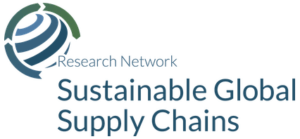Brazil exports illegal gold: How to tackle the problem
Larissa Rodrigues
Apr, 2024
#Mining
#Sustainability standards
#Latin America
Brazil exported over 19 tons of illegal gold in 2020, exposing the markets of Canada, Switzerland, the United Kingdom, and others to the impacts illegal activities bring especially to the Amazon rainforest and indigenous peoples. Adequate controls of gold origin are non-existent in the country enabling fraud schemes that allow illegal gold to be sold on the formal market. Because of this, it is urgent to implement a traceability system in Brazil to track gold origin and its legal, environmental, and social compliance. Importing countries play a vital role in this process and are urged to demand action from Brazilian authorities to enhance controls and to implement traceability practices for their imports.
The result: Brazil exported 111 tons of gold in 2020, and out of that total, 17% (or 19.123 tons) were illegal, since the gold production was not registered or lacked authorization (Instituto Escolhas, 2021a). Importing countries such as Canada, Switzerland, the United Kingdom, among others, were exposed to the risk of illegality.
Calculations based on official data show that Brazil produced only 92 tons of gold in 2020, although exports reached 111 tons. This means 18.638 tons were unaccounted for in production records. Moreover, among the registered production, 485 kg were mined without permits in Mato Grosso and Pará states. Thus, a total of 19.123 tons of gold exported lacked known origin or authorizations (Instituto Escolhas, 2021a).
The illegal gold was exported mainly by the states of Minas Gerais, São Paulo, Amazonas, the Federal District, and Goiás. This assumption is based on the fact that those states did not produce a single gram of gold or exported much more than their production, suggesting they were exporting illegal gold or gold mined in states in the Amazon region.
This conclusion was based on a thorough examination by the Instituto Escolhas’ research team of production and exports of gold in each Brazilian state based on official databases and modelling. And a clear pattern was found: states in the Amazon region produced much more gold than they exported, while states in other regions, mainly in the Southeast, exported much more gold than they produced. That is, the surplus exports of the latter included illegal gold, as well as a share of the gold that was produced in the Amazon.
São Paulo state, the second-largest exporter of gold in Brazil, did not produce any gold in 2020. Therefore, 100% of its exports were contaminated by illegal gold. Minas Gerais state, the largest producer and exporter of gold in Brazil, was also not free from contamination, since 37% of its exports were not produced in the state itself (Instituto Escolhas, 2021a).
These results mean that the importing countries, which bought gold from Pará and Mato Grosso and other Brazilian states with export surpluses, are contaminated by illegal gold and gold produced in the Amazon.
The top destinations for Brazilian gold are Canada, Switzerland, and the United Kingdom. Also, gold is the main product traded between Brazil and these countries, representing 44% of the bilateral trade with Canada, 74% with Switzerland and 25% with the United Kingdom (Comex Stat, 2021).
In 2020, Canada bought from Brazil US$ 1.9 billion (41 tons) of gold and most of it from Minas Gerais state (54%), followed by São Paulo (15%). Switzerland bought US$ 1 billion (20 tons) mainly from Bahia (28%), Minas Gerais (22%), Mato Grosso (18%), São Paulo (10%), and Pará (9%) states. The United Kingdom bought US$ 645 million (11 tons) mainly from Minas Gerais (80%) and Goiás (20%), but also in small quantities from São Paulo and Amazonas states (Comex Stat, 2021).
All these big importing countries are exposed to the risk of illegality as they sourced gold either from Pará or Mato Grosso states or from states with export surpluses, such as Minas Gerais, São Paulo, Bahia, and Amazonas.
Illegal gold mining problems have only intensified
Also, although mining activities are not allowed in Indigenous Lands and in various types of Conservation Units, gold mining research requests inside these territories have grown recently, following the private sector's claims to allow exploitation in these areas.
Currently, there are 6.2 million hectares of land covered by gold mining research requests within Indigenous Lands and Conservation Units in the Amazon (Instituto Escolhas, 2021b). That is an area twice the size of Belgium.
This situation intensified with Bill 191/2020, presented by the federal government to Congress to allow mining inside Indigenous Lands, despite the indigenous peoples' resistance and the fact that gold mining would not bring socioeconomic development to these communities, although the government saying it would (Instituto Escolhas, 2021c).
Lack of control is an incentive for fraud schemes
These schemes happen when garimpeiros (wildcat miners) sell illegally mined gold to financial institutions known as Securities Distributors (or DTVMs, in Portuguese). By law, these institutions are the only ones allowed to buy gold from garimpos (wildcat mines) (Law nº 12844/2013). In addition, the law states garimpeiros need to fill out a form - sometimes only on paper - specifying where the gold comes from. However, this is a self-declaratory process, garimpeiros are not required to present documents proving the origin of the gold. By law, this process is based on the good faith of the sellers.
Usually, illegal miners simply state that their gold came from a legal mine. No one verifies if the gold came from that mining site or from an Indigenous Land, for instance. The purchase is finalized, no questions are asked, and the illegal gold becomes legal, entering the official market and leaving almost no trace behind of its illegal origin.
How to tackle the problem?
There are initiatives that could be prioritized, such as Bill 836/2021, which is currently under discussion by the Brazilian Senate. The Bill provides the basis for more effective control of gold commercialization by establishing that sales would be conditioned on proof of origin and environmental licensing of mining sites, as well as documents for the transportation of gold. In addition, it establishes that commercialization should be based on electronic invoices and that all documentation should be linked to electronic databases.
For a traceability system to be implemented in Brazil, since the government fails to be proactive, importing countries play a vital role as large-scale consumers of Brazilian gold. Considering gold is Switzerland's, Canada’s, and the United Kingdom’s top import from Brazil it is crucial for them to act, along with other countries, as illegality is high. It would be important for these countries to demand that Brazilian authorities implement such a system and to condition their imports to traceability practices.
Currently, Brazil is not included in the list of Conflict-Affected and High-Risk Areas (CAHRAs) accompanying the EU Conflict Minerals Regulation that stablishes due diligence obligations for gold, tin, tantalum and tungsten imports. The immediate inclusion would help signalizing the risks of Brazilian suppliers and the need for supply chain monitoring.
It would also be necessary to strengthen the standards for minerals responsible supply chains set by the Organisation for Economic Co-operation and Development (OECD) (OECD, 2016). OECD’s guidance indicates companies should either adopt traceability systems or identify upstream actors in their supply chain. The latter, however, would not be sufficient to prevent illegal exports from Brazil, as gold transactions may occur through intermediaries. A weak local law enables fraud schemes to hide the illegal origin of gold during its commercialization between garimpeiros (wildcat miners) and financial institutions (securities distributors). Also, there is no way to know if big mining companies trade gold from other mining sites other than their registered ones.
Another opportunity to strengthen controls is the Environment Bill under discussion in the United Kingdom parliament. The bill establishes companies must implement a due diligence system for “forest risk commodities”. However, minerals are not included among them when they should be, considering mining impacts on forests and biodiversity. Further, due diligence systems should expressly include traceability methods. The bill would also be more effective if it classified high socioenvironmental risk countries, such as Brazil.
Tracking gold origins and its legal and environmental compliance from the mining site to the exports is the only way importing countries can disassociate themselves from illegal gold, while supporting local efforts from civil society to end the violence and destruction that inflicts the Amazon rainforest and its people.
Comex Stat (2021). “General Exports and Imports”.
INPE - Instituto Nacional de Pesquisas Espaciais (2021). Coordenação Geral de Observação da Terra. Programa de Monitoramento da Amazônia e Demais Biomas. Avisos – Amazônia Legal (DETER).
Instituto Escolhas (2021a). “Brazil exports illegal gold”, São Paulo: Instituto Escolhas.
Instituto Escolhas (2021b). “Protected areas or threatened areas? The endless gold rush in the Indigenous Lands and Conservation Units of the Amazon”, São Paulo: Instituto Escolhas.
Instituto Escolhas (2021c). “What is the real socioeconomic impact of gold and diamond exploration in the Amazon?”, São Paulo: Instituto Escolhas.
MPF – Ministério Público Federal (Federal Prosecution Service) (2021). “MPF pede suspensão de instituições financeiras que compraram ouro ilegal no Pará”
OECD (2016). “OECD Due Diligence Guidance for Responsible Supply Chains of Minerals
from Conflict-Affected and High-Risk Areas”. Third Edition, OECD Publishing, Paris.
Tollefson, Jeff (2021). “Illegal mining in the Amazon hits record high amid Indigenous protests”, Nature, News.

